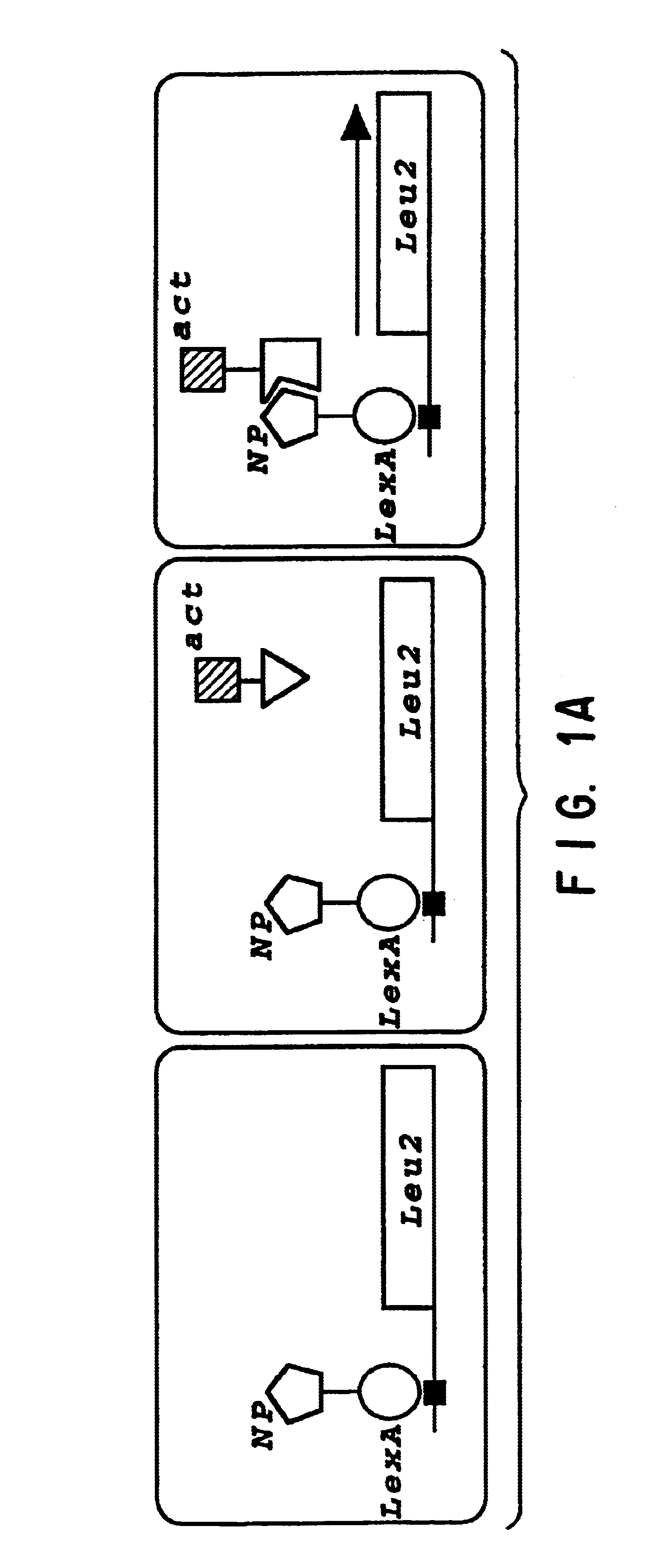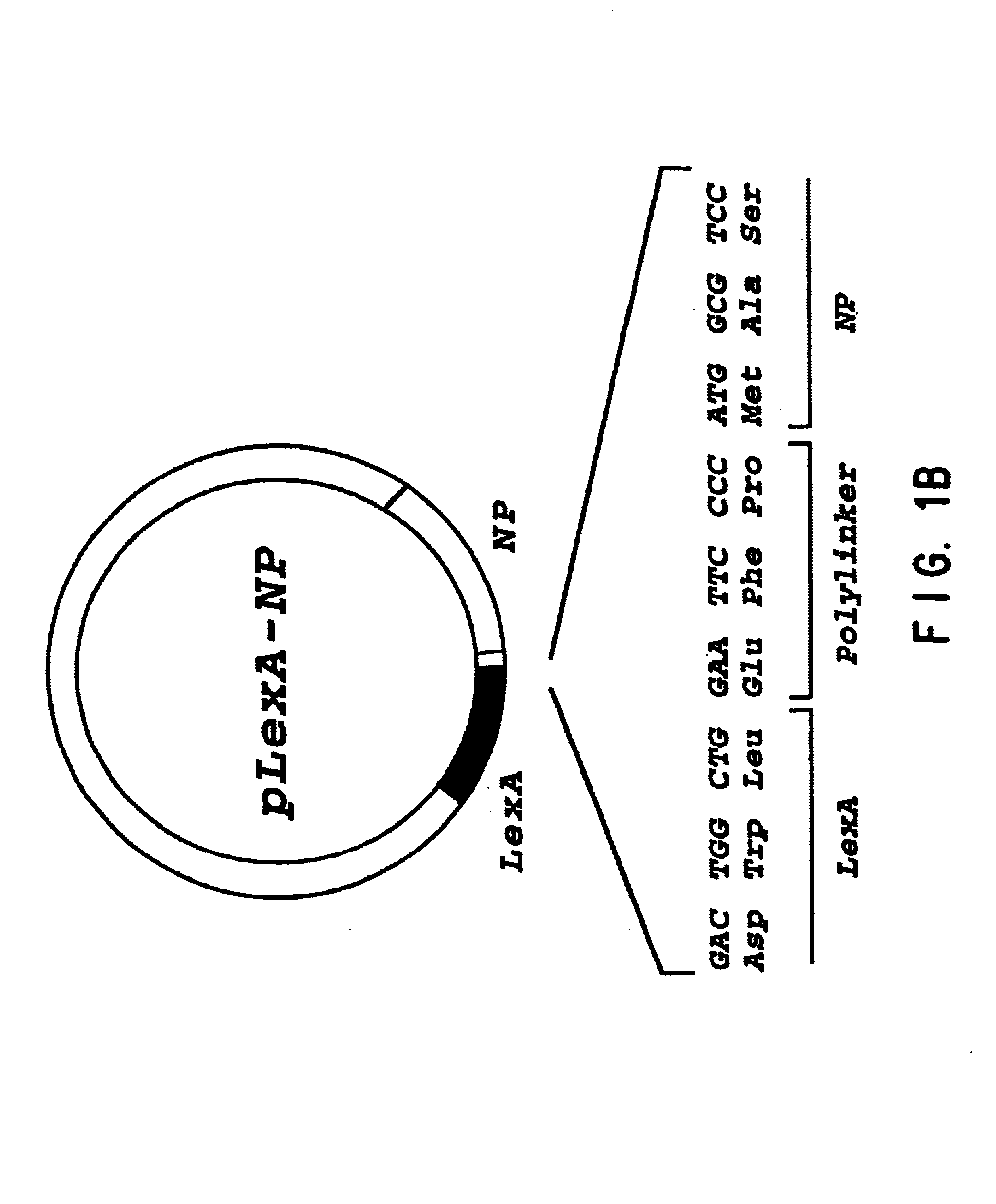Identification and use of antiviral compounds that inhibit interaction of host cell proteins and viral proteins required for viral replication
a technology of host cell protein and antiviral compound, which is applied in the field of identification and use of antiviral compound that inhibits the interaction of host cell protein and viral protein required for viral replication, can solve the problems of host protein identification and interference with cellular functions, and achieves the effect of preventing the expression of host proteins
- Summary
- Abstract
- Description
- Claims
- Application Information
AI Technical Summary
Benefits of technology
Problems solved by technology
Method used
Image
Examples
Embodiment Construction
[0025]The present invention relates to the identification of host cellular proteins that interact with viral proteins important to viral replication and infection; the identification of compounds that interfere with the specific interaction of the host cell and viral proteins; and the evaluation and use of such compounds as antivirals in the treatment of viral infections in animals, including humans.
[0026]The invention is described in this section and in the examples, below for the identification and inhibition of interactions between human host cell proteins and influenza viral proteins. For clarity of discussion, particular detail is provided for the isolation of two particular host cell proteins. The first such protein is nucleoprotein interactor 1 (NPI-1), a human cell protein that interacts with the influenza virus NP protein. The NPI-1 gene and protein, and the protein's interaction with NP protein are described in detail in the example in Section 6, below. Other host cell pro...
PUM
| Property | Measurement | Unit |
|---|---|---|
| Fluorescence | aaaaa | aaaaa |
| Interaction | aaaaa | aaaaa |
Abstract
Description
Claims
Application Information
 Login to View More
Login to View More - R&D
- Intellectual Property
- Life Sciences
- Materials
- Tech Scout
- Unparalleled Data Quality
- Higher Quality Content
- 60% Fewer Hallucinations
Browse by: Latest US Patents, China's latest patents, Technical Efficacy Thesaurus, Application Domain, Technology Topic, Popular Technical Reports.
© 2025 PatSnap. All rights reserved.Legal|Privacy policy|Modern Slavery Act Transparency Statement|Sitemap|About US| Contact US: help@patsnap.com



